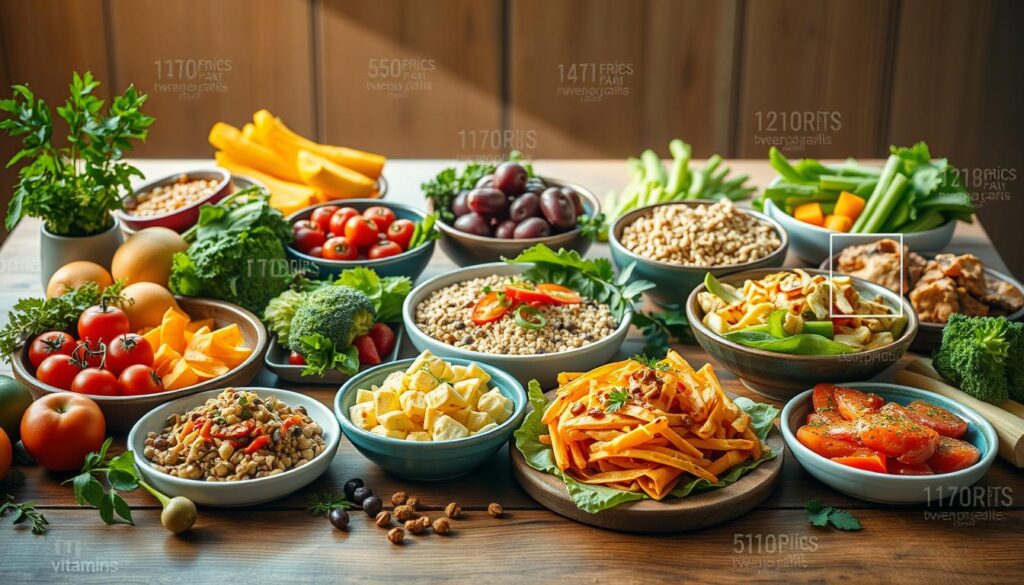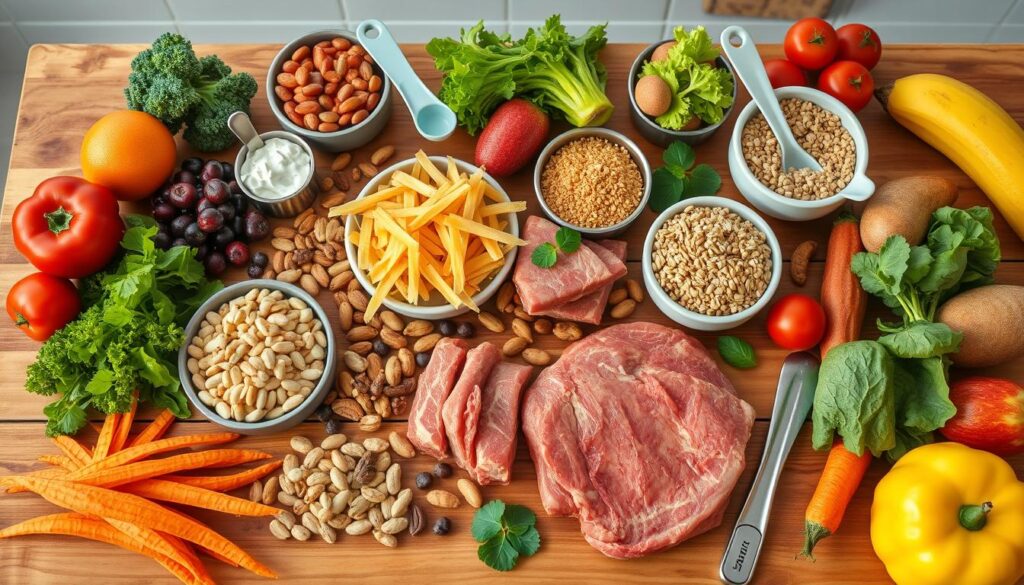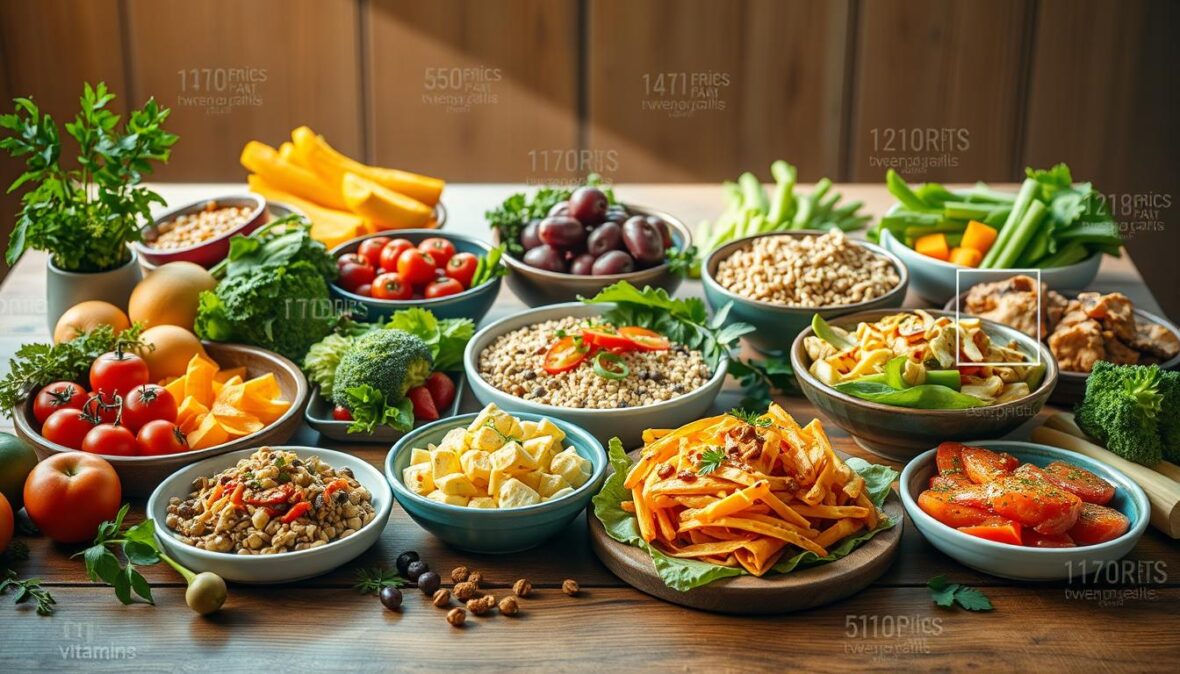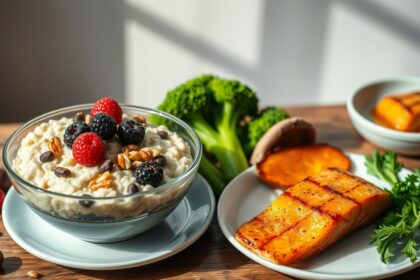Eating well is key to staying healthy. With so many recipes out there, it’s hard to know what’s best. This article helps you understand the nutrition facts in recipes. This way, you can make smart choices and reach your health goals.

Key Takeaways
- Discover how to read and interpret food labels for better meal planning
- Learn about the key nutritional components to monitor for a balanced diet
- Understand the significance of daily value percentages in maintaining a healthy lifestyle
- Explore the essential macronutrients that play a vital role in wholesome meal planning
- Uncover strategies for smart portion control and maximizing nutrient density
- Embrace clean eating principles for optimal health and well-being
Understanding Healthy Recipes Nutrition Facts: A Complete Guide
Exploring healthy recipes and their nutrition facts can seem overwhelming. But, with the right information, you can make choices that fit your diet and meal plans. This guide will teach you to read food labels, spot important nutrients, and understand daily value percentages.
Reading Food Labels Effectively
Learning to read food labels is key to healthier eating. Get to know the parts of a nutrition facts label, like serving size, calories, and fat. These details help you pick foods that meet your nutritional needs.
Key Nutritional Components to Watch
- Macronutrients: Focus on protein, carbs, and healthy fats in your diet.
- Micronutrients: Vitamins and minerals like vitamin A and calcium are vital for health.
- Added Sugars: Try to cut down on added sugars to avoid weight gain and health problems.
Daily Value Percentages Explained
Daily value (DV) percentages on labels guide you on nutrient intake. Knowing these percentages helps you choose foods that meet your dietary needs.
| Nutrient | Daily Value (%) |
|---|---|
| Total Fat | Less than 65 g (100% DV) |
| Sodium | Less than 2,300 mg (100% DV) |
| Total Carbohydrates | 300 g (100% DV) |
| Dietary Fiber | 28 g (100% DV) |
By grasping nutrition facts and key nutrients, you can make better food choices. Applying these tips to your meal planning will help you eat healthily and wisely.
Essential Macronutrients in Wholesome Meal Planning
Creating healthy meals begins with knowing the main macronutrients – proteins, carbohydrates, and fats. These nutrients give us energy, help our bodies grow, and keep us healthy. By mixing these nutrients in your clean eating and whole foods meals, you boost your health and happiness.
Proteins are key for fixing tissues, building muscles, and fighting off sickness. Good protein sources are lean meats, poultry, fish, eggs, beans, and dairy. Carbs, our main energy source, power our bodies for work and thinking. Choose complex carbs like whole grains, fruits, and veggies for lasting energy and nutrients.
- Healthy fats, found in avocados, nuts, seeds, and olive oil, help with hormones, brain health, and absorbing nutrients.
- By balancing these macronutrients, you make meals that feed your body and mind well.

Wholesome meal planning is about finding the right mix of proteins, carbs, and fats. Try different mixes to find what makes you feel full, energized, and well-nourished.
Smart Portion Control and Nutrient Density Guidelines
Getting a balanced diet is not just about what we eat. It’s also about how much we eat. Controlling portions and focusing on nutrient-rich foods are key for staying healthy and managing weight.
Measuring Perfect Portions
It’s easy to figure out the right portion sizes. For meat, fish, or poultry, use your palm as a guide. Grains like rice or pasta should match the size of your fist. Fruits and veggies can be as big as your cupped hand.
Maximizing Nutrient Content Per Serving
Nutrient density means getting lots of good stuff from your food. Foods high in nutrients include leafy greens, berries, fatty fish, and legumes. These foods pack a punch in every bite.
Balancing Caloric Intake
It’s also important to balance the calories you eat with your body’s needs. Counting calories helps you avoid eating too much or too little. This balance is key for your health and happiness.
| Portion Size | Nutrient Density | Caloric Intake |
|---|---|---|
| Your palm for meat, fish, or poultry Your closed fist for grains Your cupped hand for fruits and vegetables | Leafy greens, berries, fatty fish, legumes | Balanced intake to support overall health and well-being |
Mastering portion control, choosing nutrient-rich foods, and balancing calories can make your healthy recipes even better. It’s a great way to support your health and wellness goals for the long term.

Clean Eating Principles for Optimal Health
Adopting clean eating principles can change your life for the better. It’s all about eating whole, unprocessed foods that are full of nutrients. Eating fresh fruits, veggies, whole grains, lean proteins, and healthy fats can boost your health.
It’s not just about what you eat, but how much nutrition you get from it. Clean eaters aim to get the most nutrients from their meals. This way, they support their health and enjoy the natural tastes of whole foods.
Starting with clean eating is easy. Just choose fresh snacks over processed ones. Or, plan your meals to include a variety of nutrient-rich foods. By doing this, you can improve your health and feel great.




2 Comments
Pingback:
November 19, 2024 at 7:54 amPingback:
November 27, 2024 at 9:53 pm